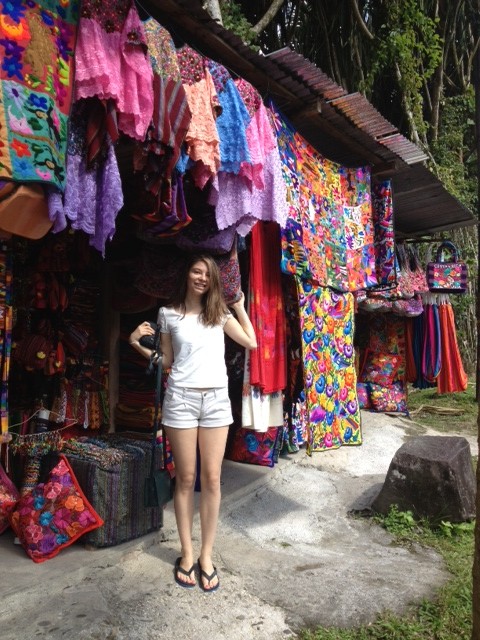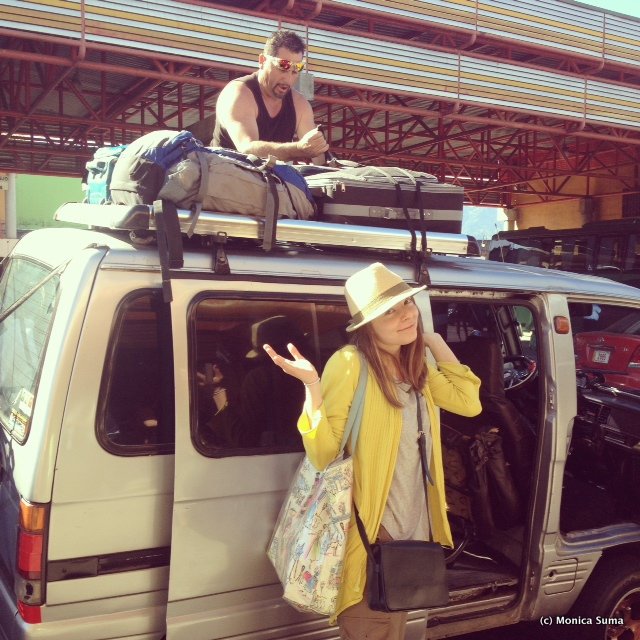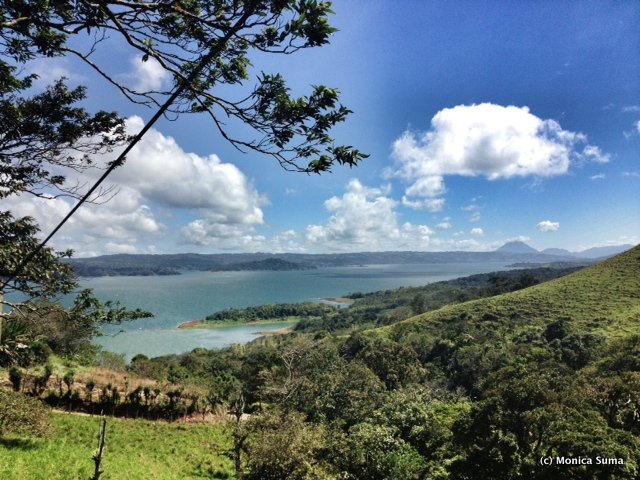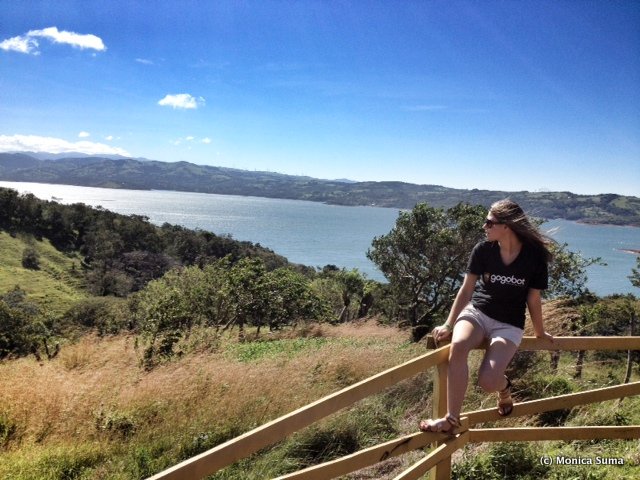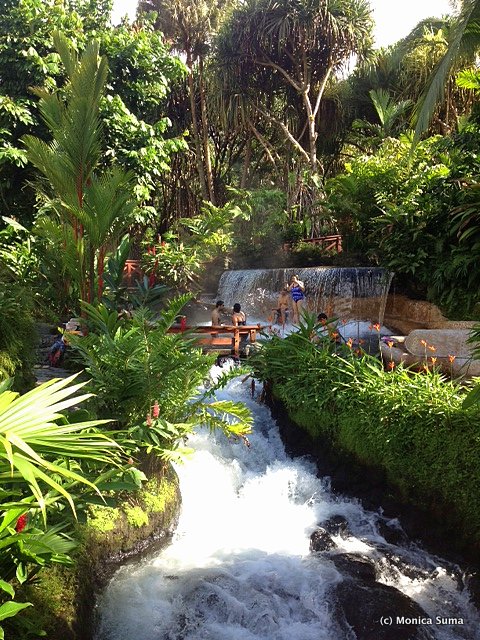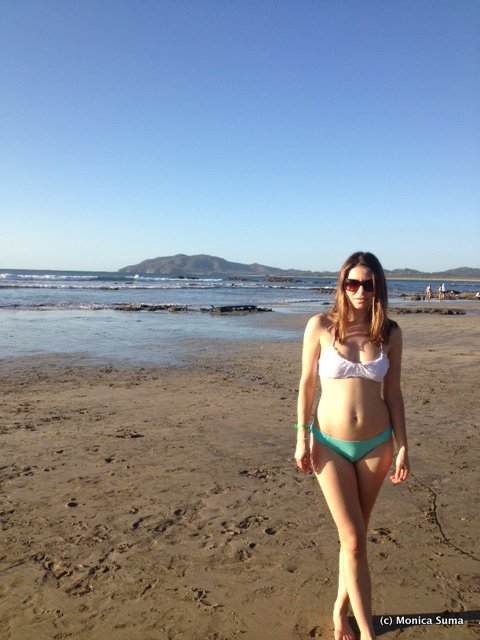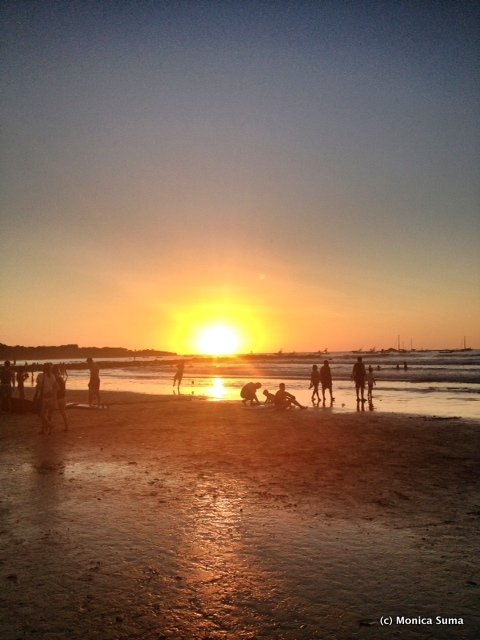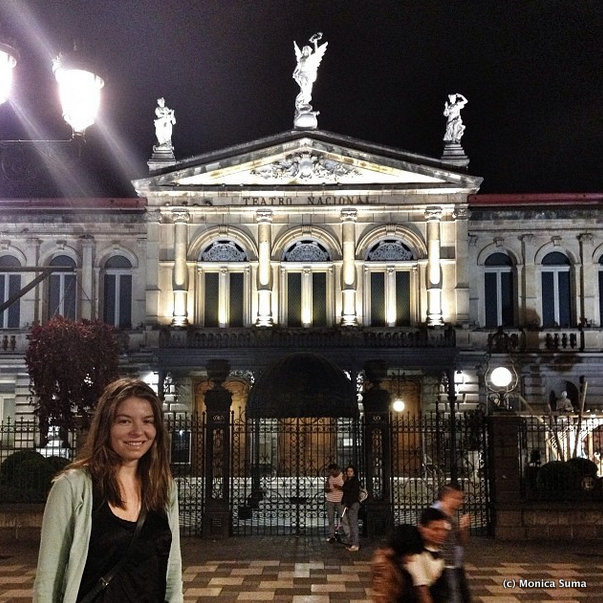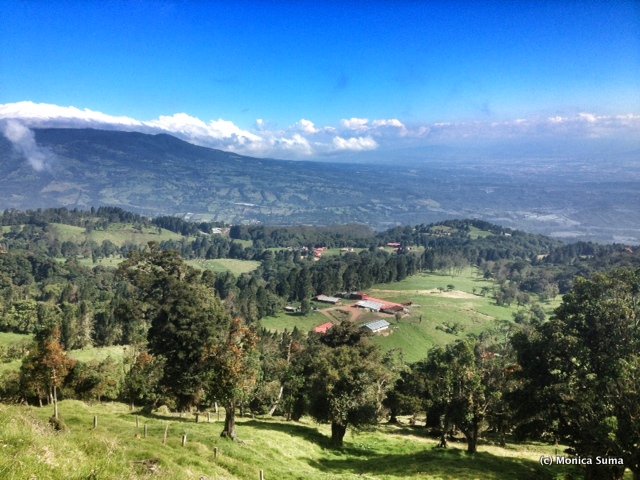When you only have a few days to a week to explore Costa Rica, you either pick a few destinations to focus on or you take the risk in knowing that you’re bound to run into some headaches.
My impromptu Christmas trip to the land said to be the greenest country on Earth – “Costa Rica” translates into rich coast – was surely going to be a whirlwind of highlights, given the short amount of time I had. And yet, I wanted to see it all.
Guess what? I didn’t, not even 50% of it. I left as frustrated as the kid that didn’t get a toy from the toy store, anxious to see more, much more. I ran into every possible kind of frustration – from not finding transportation or accommodations, from throwing up a meal I had just eaten, from not being able to see an attraction after a whole day spent in buses and trains, and so on.
One thing helped, though; whenever nothing worked out, I would just wake up and hit the road. You know that saying “80% of the work is showing up?” In my case, it was definitely true, because every single time I tried to figure out where or what to do, someone came to the rescue. Most of the time, it was the ticos – as the Costa Ricans are called.
Getting around Costa Rica
As I woke up refreshed and excited to start my first day road tripping through Costa Rica, after a sabroso Navidad (with my newfound Venezuelan friends, the phone rang. It seemed that my friend, Laura and I, were suddenly left without a car. The person that had offered to drive us suddenly bailed out. It was 6 AM; after calling 30 car rentals across the entire country, by 7.30 AM we realized there would be no driving on this trip. Everything was fully booked.
Option A
Given Costa Rica is mainly a rural country, mostly known for its lush nature and incredible wild life, transportation can be a bit more challenging at times. If you decide to rent a car – the best option time-wise but not the most economical – you need to rent an off-road SUV, for many of the country’s roads are bumpy, mountain roads, or even dirt roads, where a simple sedan simply won’t do. Since we had not found one available car to rent – it was in fact Costa Rica’s high season, meaning no rain – this option was a no-go.
It’s also funny for a first-time visitor to discover that Costa Rica doesn’t have actual addresses, at least not too many of them. Instead of a street name and number, you’ll need to blindly find your way to wherever you’re going, with the only directions being “125 m left from the church on top of the hill.” If that doesn’t work, you brush up your Spanish and ask a local.
Option B
If you’re out of luck in finding a car, you turn to transfer shuttles, or local buses. The transfer shuttles, depending on where you’re heading, averages $50 for an approximate four-hour ride. This includes a knowledgeable chauffeur and a nice van with air conditioning, not to mention the convenience of arriving at your destination significantly faster. Our first day road tripping? No, no shuttles available either.
Option C
If you’re not willing to pay this much or you can’t find any available seats, you’re left with no other choice than the local buses. They are infinitely cheaper and as safe as they can be. It helps to speak Spanish, and to put your hustling hat on. It’s not going to be comfortable, convenient or fast, but it will do the trick. What’s most troublesome is finding out the exact schedules. The “pura vida” concept in Costa Rica is certainly something most countries should adopt a little of, but when it comes to things as knowing the precise time for public transportation, you’re better off asking the locals. The public bus was full as well, so my first day exploring Costa Rica had certainly not lived up to my expectations.
Option D – could it be?!
Wait!? There’s an Option D? Yes, fortunately for us, there was. In the rare occurrence when even the local bus is full, you pray to God for a solution. That’s when two Austrian girls will come your way, asking you to split a van with a pirata.
A “pirata” – seen here above strapping our bags to his van – is a Costa Rican that will charge you too much money and drive you in his crappy van to your desired destination.
We negotiated as much as we could, after which we hopped on. For the remainder of the painful four-hour ride, Laura and I bounced up and down the back seats of the crippling van, making bets at which curve the car would break down. Miraculously so, it didn’t; nor did the hot coffee that left flying from my hands burn or stain me. Hey … perhaps this trip hadn’t started that bad after all … we were munching on Christmas Austrian cookies, after all.
As soon as we got into La Fortuna, Arenal, our first stop, our saviors – hence the two Austrian girls – were our good luck charm in finding an available room at their hotel. We had come without a hotel booked, hoping we would find one upon arrival. And alas! We did.
Prices in Costa Rica
I had heard Costa Rica was the most expensive country in Central America, and boy, is it expensive! I was shocked in fact to discover how pricey it is.
Hostels
I stayed with my friend in a spectacular residential complex in Escazú, which is in San Jose, but for the remainder of the trip, we stayed in lodges and hostels. The cheapest private room with two beds was for $35, in La Fortuna, which is essentially a more developed village; nothing fancy, just two beds and a private bathroom.
In Tamarindo, the same private room with two beds and a private bathroom was $79. We were both disappointed upon arrival to see Blue Trailz Surf Camp didn’t quite live up to its reviews and expectations.
Transportation
As previously mentioned, shuttles cost about $50 for a four-hour ride, and meals at decent restaurants are at least $20 a person. Basically everything was similar to what I would normally spend in NY. Sure, you could eat at sodas – local restaurants – for a quarter of a price, which I did few times. But after I threw up the fried empanada I bought from one, I decided to stick to ceviche and non-fried foods.
In fact, I was also surprised I didn’t hold colones in my wallet for one moment. I had brought in dollars, seeking a better exchange rate than in the US, and with so many expats and American tourists in Costa Rica, I could pay in either currency.
Adventure tours
Whether you’re looking for zip-lining, canopy tours, or simpler activities such as bird watching, kayaking through mangroves or volcano hiking trails, you’re looking to spend between $50 to a $100, depending on the intensity and duration of the experience.
So, if you’re looking for beautiful nature and lots of adventure on a budget, Costa Rica is not your place. You’re better off in Nicaragua, Guatemala or any other Central American country.
So, what is there to see and do in Costa Rica?
The answer is: A LOT! For a realistic overview of the countries’ main attractions, you would need at least 10 days to two weeks. It’s an illusion to think you can visit more than two areas in a week alone; it takes time to get around and many times, it doesn’t depend solely on you.
While the country has only about 0.1% of the world’s landmass, it contains 5% of the world’s biodiversity. Around 25% of the country’s land area is in protected national parks and protected areas, the largest percentage of protected areas in the world. Costa Rica was not voted the “happiest country on Earth” for nothing. The country boasts a variety of terrains like none other – volcanoes, jungles, beaches, thermal resorts and wildlife. It’s an adventure junkie’s paradise and an outdoors lover’s oasis.
1. Volcanoes
There are about 200 volcanoes in Costa Rica, out of which half are active. The biggest one is Volcan Arenal, which is due to its potential danger and previous incidents of people suddenly losing their lives, its peak cannot be visited. What is most pleasant in the area – apart from the countless adventures one can embark on – is driving from Arenal towards Guanacaste where the Pacific beaches are, and admiring the breathtaking views of Lake Arenal as you go past the winding streets.
You can stop at Café & Macadamia for a breather, to have a bite and admire the encompassing views of both the lake and volcano Arenal.
2. Thermal springs
There are multiple thermal springs in Costa Rica, as a result of the volcanoes’ activity. The best one is undoubtedly the Tabacon Hot Springs, in Tabacon, part of the five-star Tabacon Grand Spa Thermal Resort hotel.
Ever since I said I would be coming to Costa Rica, everyone mentioned I must visit this place and they were right! This resort is a thermal waters paradise, set in the lush jungle in close proximity to Volcan Arenal, where the water is so warm and the nature so unreal, it’s hard to ever leave.
You can pay a separate entrance for $85, which grants you a few hours in the surrounding waterfalls, natural pools and gardens, as well as a generous lunch. It was my favorite place in Costa Rica, and would gladly go back anytime.
3. Beaches
Costa Rica is rich with beaches on both the Pacific and the Caribbean coasts. I only made it to Guanacaste, which is on the Pacific side. There are many beaches in the area, about an hour away from each other, each quite different. We spent two days in Tamarindo, the most popular resort for surfers, and one that attracts most people. The beach itself is nothing out of the ordinary – I’ve definitely seen nicer beaches than this – but it’s certainly the best one for surfing, and has some of the most beautiful sunsets I’ve ever seen.
The resort town also has a wide variety of cafés and restaurants. Some of the most popular places here are the Crazy Monkey bar for Friday nights, and the Witch’s Rock Surf Camp, for its surf camp and great snacks. I also recommend Mango Verde its healthy juices, great vibe and its divine mango ceviche, as well as Gallo Fino for an authentic Costa Rican food experience.
Montezuma is another great beach, a more hippie town of sorts, wonderfully secluded. If you get the change to go, don’t hesitate; just be aware it takes more time to get there, via dirt roads, ferry and so on.
4. Jungle
Sadly, I didn’t make it to Monteverde and so I decided to leave it for the next time for a proper exploration.
Monteverde is a major ecotourism destination in Costa Rica, host to the Monteverde Cloud Forest Reserve and numerous other reserves. It’s where one can explore the jungle, the rain forest and its hundreds of wild species. It is also known as having the largest number of orchids in the world, over 60 species of amphibians, 91 species of migratory birds and home of the famed quetzal.
Zip-lining enthusiasts? Here is the place to be.
5. Natural reservations
Located in the tropical forest, The Manuel Antonio National Park is said to have one of the most impressive landscapes of the world, with several coves with white sand beaches and lush foliage amidst great mountains.
I didn’t visit Manuel Antonio either, because while I was there, it was closed due to crocodile danger.
6. The capital
There is not much to see or do in San Jose, apart from admiring the historical landmarks such as the splendid Teatro Nacional and the sumptuous Catedral Metropolitana.
San Jose is fairly small and both locals and fellow travelers agree that it’s better to keep your stay here short. It’s also quite unsafe, especially by night. I recommend going into the city with locals, as I did, or taking taxis anywhere you go. Although I wasn’t impressed by what I saw, it was great to learn more about the culture and see the reality of day to day life of a big majority of Costa Ricans, including the brothels, the slums, the grime that is so different than the lush green seen everywhere else in the country.
A great day trip close to San Jose, however, is driving up to Volcan Poas. It only takes an hour or so, depending on traffic. It’s best to go in the morning, before it gets covered in fog. The only problem is that all volcanoes in Costa Rica close by 3:30 PM.
Laura and I woke up at 5.20 am, caught the local bus from Tamarindo to Santa Cruz at 6 am, which took an hour and a half. At Santa Cruz, we fought our way in our next local bus, headed to San Jose, which took another 4 hrs and a half. After which, we boarded a third vehicle of the day, for another hour and a half going up to Poas. After about 8 hrs of travel, we were all excited to make it in time before the 3:30 pm closing time. No clouds, bright and sunny as I was told it never is. Soon enough, we realized there were 2 km of cars and there was no way to make it in time. Sheer frustrating took over me, with this encompassing view of San Jose, cloud free, acting as a bit of a relief.
The people
As you may have very well heard, ticos are generally happy people that are always willing to help. They live by the acronym “pura vida” which perfectly describes their laid back attitude towards anything. I was pleasantly surprised to make instant friends on the plane getting there, offering me their phones, houses and often a much needed ride, getting valuable advice from locals when I needed it the most and mostly feeling very welcome.
What was less agreeable, at least for a New Yorker like myself, was that the service is generally very slow and some people take the pura vida concept entirely too seriously. Some take offense when you’re rushing them for crucial information, which often leads to culture clash.
***
With all its ups and downs, this trip opened my appetite for more adventure in Costa Rica. I want to come back to properly explore Monteverde and Manuel Antonio, study up close its variety of birds, monkeys and turtles, face my fear of heights doing a canopy tour, head down to Osa Peninsula which my friend Fresh Traveler already convinced me of its incredible beauty, visit Tortuguero for its blue jeans frogs, and fully unwind with a holistic lifestyle at Rancho Margot.
It’s in Costa Rica that I saw the most stars I’ve seen in years, and for that I am grateful. #puravida

